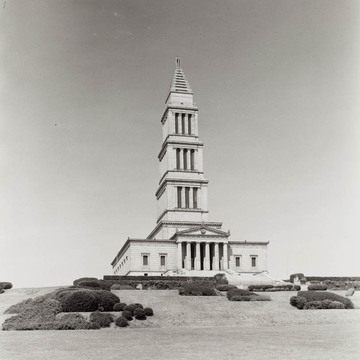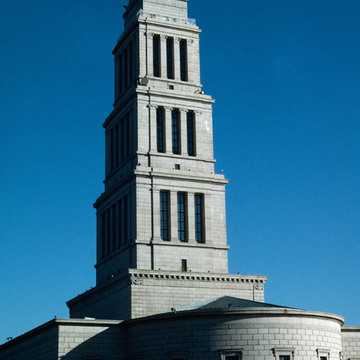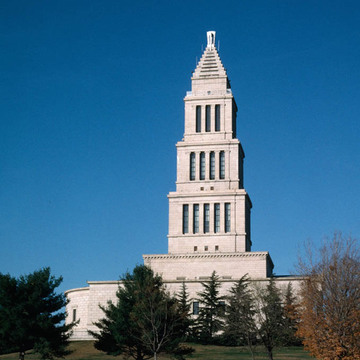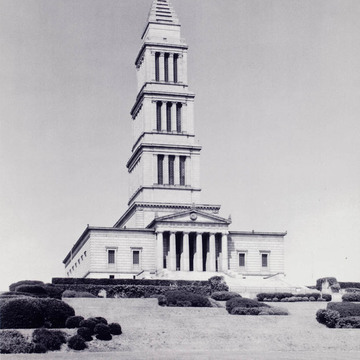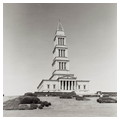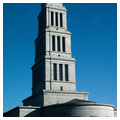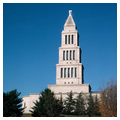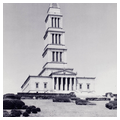The memorial, looming over the town, is impossible to miss and is perhaps the largest example of architectural kitsch in the United States. It was the work of the well-known New York firm that later participated in the design of Rockefeller Center. Helmle chose as his model one of the seven wonders of the ancient world, the lighthouse of c. 280 B.C. which stood in the harbor at Alexandria, Egypt. Reconstructions of the Alexandria Lighthouse were a common feature of Beaux-Arts programs, and both Frank J. Helmle, the initial designer, and Harvey Wiley Corbett, who took over c. 1920, were products of the Ecole. The original design of 1917 was modified in 1920 by the addition of the pyramidal crest. Symbolically, the ancient model links Washington, a Mason, not only to the founding of the country but also to the cradle of civilization and suggests a guiding light into the future. Construction began in 1922, and the building was dedicated in 1932, even though many features were incomplete
You are here
George Washington Masonic National Memorial
1917–1932, Helmle and Corbett. 101 Calahan Dr.
If SAH Archipedia has been useful to you, please consider supporting it.
SAH Archipedia tells the story of the United States through its buildings, landscapes, and cities. This freely available resource empowers the public with authoritative knowledge that deepens their understanding and appreciation of the built environment. But the Society of Architectural Historians, which created SAH Archipedia with University of Virginia Press, needs your support to maintain the high-caliber research, writing, photography, cartography, editing, design, and programming that make SAH Archipedia a trusted online resource available to all who value the history of place, heritage tourism, and learning.














